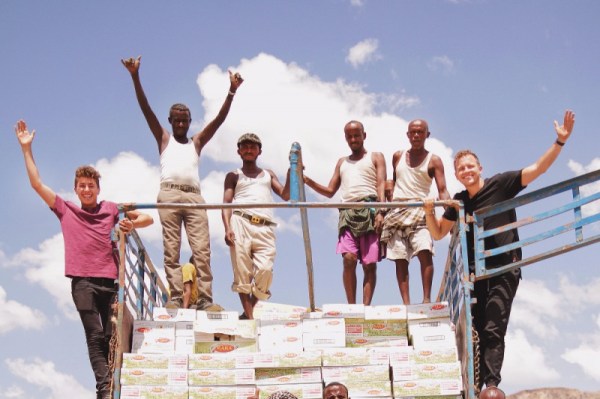If you’ve ever contributed to a charitable fundraising campaign online in the last seven years, chances are that one of those campaigns (if not all of them) have been through GoFundMe, a web platform where people can set up and donate to campaigns for charitable causes.
The popular site and the company that created it have been on a long-term growth tear: earlier this year the company passed 40 million individual donors who have made a total of $4 billion in donations, up from 30 million and $3 billion eight months ago.
And now it’s gearing up for the next step. As part of a bigger plan to become, in CEO Rob Solomon’s words, “the giving layer for the internet,” GoFundMe is expanding its operations to France and Spain, part of a bigger plan to create localized services across Europe. By the end of the summer, GoFundMe plans to be in 18 countries, up from six currently, including the U.S., Canada, Australia and the U.K.
Often, when startups embark on international expansions, it’s the result of — or the driver for — massive funding injections. This isn’t the case here. Solomon said that GoFundMe will roll out in the new markets organically (that is, no plans for acquisitions), and using proceeds from its own balance sheet, as GoFundMe has been profitable for years already.
“We’re doing this all on our own steam,” he said in an interview. On the subject of future funding, the company is not raising money right now, “but the attitude is never say never. There could be reasons such as an acquisition, but there are no proactive plans for VC investing, and the business is profitable.” (You can read more from Solomon here.)
Whether that remains the case longer term remains to be seen. The company has no plans to get acquired — which doesn’t mean that companies might have been interested regardless — and it sounds like going public is very much in its sights. “We’ve all agreed that the potential outcomes are that you get acquired or go public, and we have no intention of getting acquired,” he said in response to my question about IPOs down the line.
The company is nothing if not ambitious. “We are completely heads down focused on global expansion and building the business and creating a better service, as part of what we see as the foundational elements for a platform company,” Solomon said. “We want to be the giving layer of the internet.”
There is, in fact, a massive opportunity here. In the U.S., there is some $350 billion made annually in charitable donations, with the figure bumping up to $500 billion globally. And right now the wider landscape for connecting money to causes is massively fragmented and inefficient.
Solomon talks of a “donor graph” — not unlike Facebook’s social graph where you can figure out a map of all your connections to people and interests, or LinkedIn’s professional graph that tries to create the same picture for your work life. In GoFundMe’s case, it could be related specifically to where an individual already donates money, and what that individual cares about, and in turn where she or he might want to donate in the future.
“We think we stand a very good chance of being able to provide a platform company for that opportunity,” Solomon said.
The applications for this are potentially very interesting. For example, it can help larger nonprofits figure out which consumers would be best to target in a specific campaign, rather than spraying and praying, and potentially harming their reputation.
On the consumer side, people often find themselves in the predicament of wanting to give more to charity, but finding it hard to figure out what to do next, and feeling confident that their money really will go where it’s intended. GoFundMe potentially can provide solutions to these sorts of cases.
It’s also not a completely uncontested space. In addition to a number of competitors in the same direct area as GoFundMe (such as JustGiving), Facebook has built tools for nonprofit organizations and individuals (on behalf of those nonprofits) to fundraise for causes.
And earlier this year, Facebook also debuted a “personal fundraiser” tool that is perhaps its closest competition with GoFundMe. (Facebook’s fees are lower than those of GoFundMe, 6.9 percent + $.30 fee for payment processing fees, fundraiser vetting, security and fraud protection, versus 7.9 percent + $.30 processing for personal or charity campaigns at GoFundMe.) However, we’ve heard very little about how any of the fundraising features have been doing since they’ve launched.
Co-founded by Andrew Ballester and Brad Damphousse in 2008 in San Diego, GoFundMe sits alongside others like Kickstarter, Indiegogo and JustGiving as part of a larger crowdfunding universe, where people create campaigns to collect money and primarily use social media to attract attention for them.
The company is backed by Accel, Technology Crossover Ventures, Iconiq Capital, Greylock, Meritech and Stripes. But while it has provided a new level of transparency and ease for people to donate money, ironically GoFundMe has never disclosed just how much money it has raised itself.
To be fair, there have been donations coming in from around the world to the platform for years already. Opening up localized operations, however, means being able to take local currencies and having the site translated into specific languages, and also means more dedicated customer support and business development teams.
Some early campaigns that have been created in a limited beta in France and Spain have included efforts to help refugees, finance medical needs, save small businesses, and provide food in Somalia.
For the time being, all of GoFundMe’s European operations are being run out of Dublin, where the company set up an international office last year.
